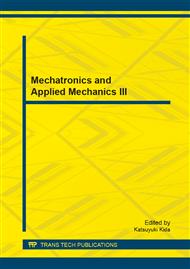p.235
p.241
p.249
p.253
p.259
p.264
p.268
p.275
p.280
Research on Construction of Kinect-Based Virtual Situation Laboratory
Abstract:
In order to solve the problems of expensive and non-universal dedicated virtual situational teaching laboratory equipments, this paper proposed to apply Kinect to establish low-cost and strongly-immersive virtual situational teaching system. Figure image matting is a key issue of Kinect-based virtual situational teaching system. So a fast and real-time matting algorithm is hereby put forward with use of Kinect depth map. It adopt improved region growth algorithm to obtain trimap, coupled with the use of a set of shared sample points with low computational complexity. Through weighted filtering, image matting regions are smoothed so as to obtain accurate matting results. Practices in classroom situational teaching for Business English prove this matting method is robust and stable, and almost unaffected by light and complex background. Kinect-based virtual situation and somatosensory interactive technology can better meet the needs of classroom teaching, which is a low-cost and strongly-immersive virtual situational teaching solution.
Info:
Periodical:
Pages:
259-263
Citation:
Online since:
February 2014
Authors:
Price:
Сopyright:
© 2014 Trans Tech Publications Ltd. All Rights Reserved
Share:
Citation:


